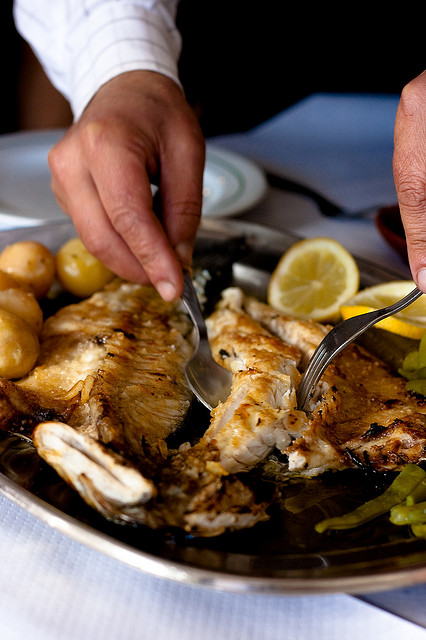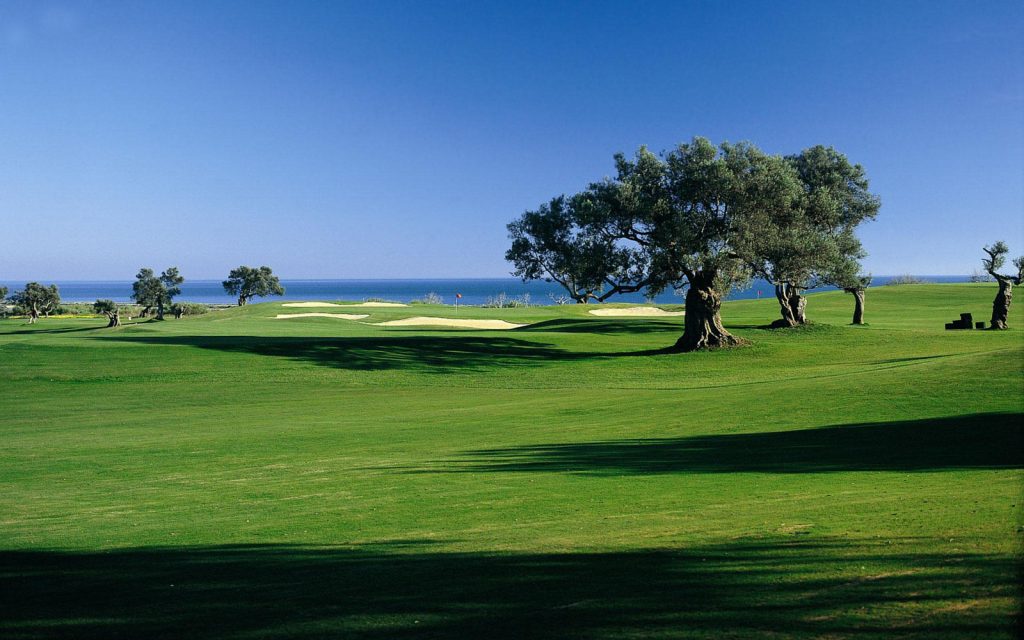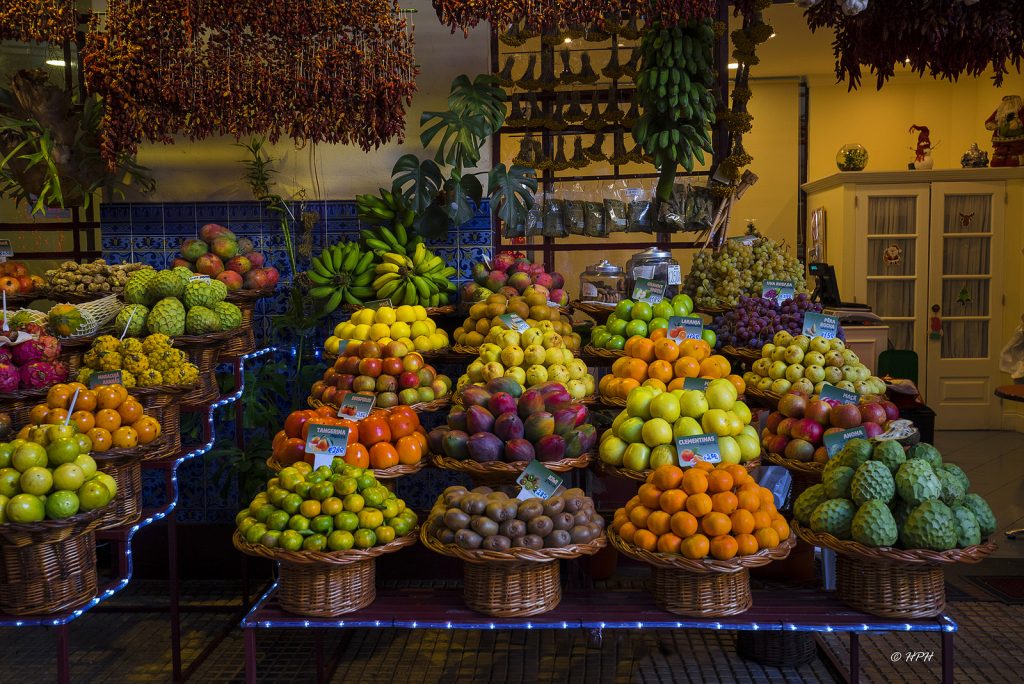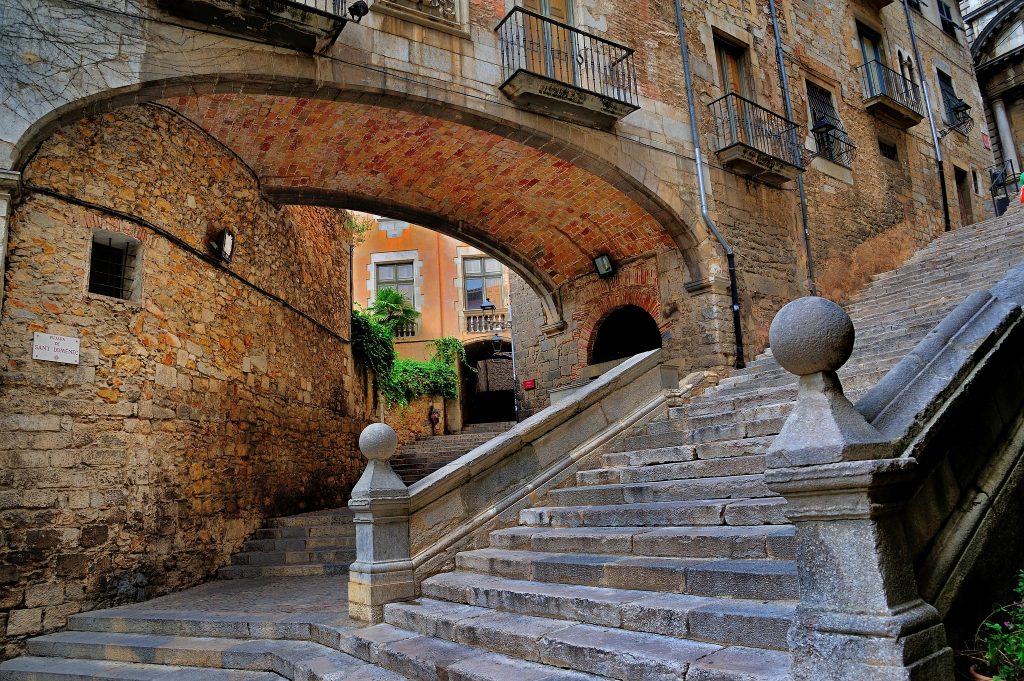Dieting Food Lover Style: A Portuguese Guide to Healthy Food

I have to admit that I don’t jump right into a rigorous diet on the first day of the New Year. I spend most of January convincing myself that it’s time to cut back on the carbs and desserts and hit the gym. I ease my way into a new food routine, the one I had before the first signs of the holiday season in America burst into supermarkets in the form of giant turkeys. Like with any type of withdrawal, it’s not easy to recover from nearly three months of intense gorging. I take baby steps towards recovery, and by February, I’m ready to get back to a moderate way of eating. I say moderate because I’m not your water and salad kind of diehard dieter. I still want flavor and comfort in my food—and as a Portuguese native, a glass of red wine with dinner.
MEDITERRANEAN DIET

If you know anything about the famous South Beach Diet, you’ll know that a glass of wine is allowed in the second phase (after two weeks) of their dieting plan. I have taken what I learned from their book and fused it with my own Mediterranean background to create what works for my diet. I don’t worry so much about breakfast or lunch. Those can be easily solved with sugar-free cereal and 1% milk, or light yogurt and fruit. A salad is also easy to manage for lunch or a veggie soup—just stay away from Portuguese bread (or any bread!) and fattening dressings. It’s dinner that kills me, as it’s the most comforting meal of the day. Hence, I like to enjoy it. It’s also the meal that lingers longer, not burning as quickly as the other two. It’s when we start to slow down and eventually hit the sack. That’s why I take it so seriously.
PORTUGUESE DIET

More than a twist on the Mediterranean diet, my plan is a reflection of my Portuguese culinary influences. I cut back on the carbs like most common sense diets tell me to (sorry no bread until the weekend, or whatever days you decide to cheat, just make sure it’s just two days), and adapt some of my favorite traditional Portuguese meals to this plan. For example, there are hints of the city of Porto’s famed “Dobrada” in my diet, sans the tripe, and instead with shellfish. There’s grilled fish—something the Portuguese do so well—and olive oil. There’s a hearty chicken and cabbage stew, like the “Frango com Lombardo” without the rice or potatoes—and there’s more. The idea is to eliminate rice, pasta and potatoes and substitute them with vegetables. I know, but bear with me, it is a diet after all. I also don’t see this diet as a quick fix, but rather a way of life. That’s why I say to cheat on the weekends and eat that bread and those potatoes. It’s all about sticking to low-carb, high omega and protein-filled, flavorful foods for five days—all seven days if you would like, of course. Is this a scientific approach? Hardly, but I do lose weight over time and keep it off with this diet along with two-three hours of exercise a week. Yes, I also exercise in moderation, not diehard about that either. Life’s too short my friends.
PORTUGUESE WINTER FARE

I find dieting during the winter months especially challenging. There’s less outdoor activity and plenty of loose layers of fabric to help cover up those “problem areas.” It’s also the time of year when there’s less fresh produce to choose from—I could live on tomatoes in the summertime. The desire for a nice warm meal is also usually greater during the colder months. I know it ain’t easy, which is why I decided to share my sample menu of what I typically make during the week.
7-DAY PORTUGUESE MEAL PLAN
Now, if you’re coming to Portugal for a cooking class, a walking food tour, wine tasting or even a nature walk, you’ll get this information firsthand. But until that moment arises, allow me to provide you with my Portuguese family’s tried and true cholesterol-reducing recipes.
Monday: Roasted Pork Tenderloin and Butternut Squash (Lombo de Porco Assado)

It’s never easy to transition from the weekend to a new week. That’s why I always start off on a very flavorful note. I choose pork tenderloin because it’s the leaner pork. If I have time, I marinate it overnight. Bonus: Once you’re done roasting, leave the oven door open to help heat up your kitchen with the lingering warmth. Love it! Here’s what you’ll need:
- 1 Pork tenderloin
- 6 Garlic cloves
- 1 Red bell pepper (The use of red bell peppers in this dish is inspired by the Portuguese red bell pepper paste, Massa de Pimentao, which is often added to pork dishes in Portugal, famously used in the south’s Carne de Porco Alentejana)
- 1 Butternut squash (Can buy the pre-peeled, pre-cut kind of if you like. Can’t find butternut squash, use sweet potato, eggplant or zucchini. I like the butternut squash because it comes closest to the texture of a potato)
- 1/2 Cup of white wine
- Juice of half a lemon
- 1 Tablespoon of white vinegar
- 4 Tablespoons of olive oil
- Fresh cilantro
- Salt and black pepper to taste
Preparation:
In a baking dish (Corningware or ceramic works best), add the pork. Cover it in two tablespoons of olive oil, vinegar, white wine, lemon juice and add salt and black pepper to taste. I like to use coarse salt and freshly cracked pepper. Cut all garlic cloves in half. Then cut four pockets into the meat, small incisions where four of the garlic halves will be tucked in, along with a cilantro leaf. Scatter the rest of the garlic around the dish. Cut the bell pepper into slivers and add that to the dish. Cube the butternut squash and season with salt, then add to the dish with a drizzle of the remaining olive oil. Pre-heat the oven to 475 degrees. When it’s hot, add the baking dish and leave for about 10 minutes, then lower to 450 (temperatures may change according to oven). Bake for another 10-15 minutes, then remove from oven and turn the pork. If it’s getting dry, scoop up some of the sauce from the bottom of the dish and drizzle it with it, or add a bit more olive oil if necessary. Put back in the oven for about another 10-15 minutes. Remove the pork onto a cutting board and let rest. At this point, you can put the dish back in the oven to let the vegetables char up a bit more, which adds sweetness. After a few seconds of resting, slice the pork into about 2 inch cutlets, or as you like. Remove the dish from the oven and add the cut pork back in there. Sprinkle with the fresh cilantro and serve.
Tuesday: Broiled Red Snapper and Chickpeas (Pargo Grelhado)

By Tuesday, you’re ready to take on the week! Feeling ambitious? How about an entire red snapper? I’m a big fan of red snapper and when my local supermarket has a fresh catch, I get excited! In Portugal, I can get a whole fish every single day, which makes this dish even easier.
- 2 Red Snappers (1 per person), about 8-10 inches long, scaled and gutted at the market
- Olive oil
- Lemon juice
- Black pepper
- 1 Clove of garlic
- Red wine vinegar
- 1 Can of chickpeas
- Coarse salt
- Fresh Parsley
Preparation:
Run the fish through cold water to make sure all scales and guts have been removed, if not, pluck anything remaining. Pat dry and sit on an aluminum tray or broiler-safe pan. Sprinkle both sides of the fish with the salt and also inside its body. Zigzag a string of olive oil, from its head down to its tail (both sides) and sprinkle both sides with the freshly cracked black pepper. Pre-heat the broiler, when it’s hot, add the fish to the first shelf. Keep it close to the broiler for the first few seconds to seal in the moisture and char a bit. Same on the other side, then move it one shelf down otherwise as the oil gets hot it starts to jump up into the broiler and may cause some smoking. This is easier to do in the summertime when you can just plop the fish on the grill. Alternate: bake the fish. Use the same ingredients, but add 1/2 cup of white wine and a bit more olive oil and bake. Either method should take about 20-25 minutes. While the fish is in the oven, mince the garlic and add two tablespoons to a small skillet. Let the garlic get slightly golden then add the chickpeas. Add the vinegar and a bit more olive oil if dry. The chickpeas will already be cooked, so it’s just a matter of warming them up. Once they’re warm, remove and sprinkle with salt, pepper and parsley. At this point, the fish should be ready. Enjoy.
Wednesday: Chicken and Cabbage Stew (Frango com Lombardo)

When I was growing up, my aunt (Tia Lucinda) made this hearty chicken stew she called “Frango com Lombardo.” It wasn’t the prettiest-looking dish, stews hardly ever are, but it was the perfect winter meal. Her version includes boiled potatoes and rice. You can add those if you’re ever making this meal on the weekend. For our weekday dieting, we’ll have to stick to the veggies. And if you’re a real stickler, use chicken breasts, which are as lean as lean can be. Or, you can use drumsticks as long as you remove the skin. I tend to go down this route since the stew’s juice seeps into drumstick meat in a way words won’t do justice.
- Chicken breasts or drumsticks (your choice and however much you need). I’m using 2 ½ pounds of drumsticks which is about 8.
- Head of white cabbage
- Large white onion
- 4 Garlic cloves
- 2 Carrots
- 2 tomatoes (or sauce)
- 3 Bay leaves
- 1 Cup of white wine
- Black Pepper
- Parsley
- Olive oil
- Salt
Preparation:
Slice the onion and add to a large pot, add about 2 tablespoons of olive oil and allow the onions to tenderize and get golden. Season the chicken with the salt (to taste), push the onions to one side of the pot and add the chicken to sizzle a bit (Don’t let stick). Dice the carrots, crush the garlic cloves and add to the pot. Add the bay leaves and the chopped tomatoes. Cover and let simmer for about 2 minutes. In the meantime, cut the cabbage into eight parts or so, and add to the pot, mix it all together. Cover again and put heat on medium. As it cooks down, add another two tablespoons of olive oil and check the salt. Cover again. Will take about 30 minutes to cook down, make sure the cabbage is tender and sweet. If cabbage and carrots aren’t enough for you, you can add a can of butter beans or something similar. Finish with the parsley.
Thursday: Salmon with Spinach (Salmao com Espinafres)

You couldn’t have a diet without salmon right—the sea creature rich in the right kind of fat, the omega that’s so prized these days. I like Sockeye Salmon and often get it frozen if I cannot find it fresh. I like the firm texture and its flakiness once cooked.
- 2 Salmon fillets
- Bag of baby spinach
- 4 Garlic cloves (2 for salmon if baking; 2 for spinach)
- 2 egg yolks (if using)
- Olive oil
- White wine (if baking)
- Lemon juice
- Fat free/light butter (optional)
- Garlic powder
- Black pepper
- Salt
Preparation:
Much like the red snapper, I either broil the salmon or bake it. I sprinkle both sides with coarse salt and black pepper. If baking, I place it in a bed of fresh garlic slices, olive oil (about 3 tablespoons), and white wine (about 1/3 cup). If I’m broiling, I brush it with a mixture of lemon juice and olive, and in addition to the salt and pepper, I add a light coating of garlic powder. I broil for about 20 minutes; 10 minutes on each side. If I’m baking, don’t need to turn it, just baste it a couple of times with the juices it’s cooking in. Meanwhile, back on the stovetop I have my washed baby spinach (pat dry with paper, spinach retains a lot of water) waiting to be used. In a large skillet, I add the garlic and let it golden (not brown) in the olive oil (about 3 tablespoons) and butter (1 tablespoon). Then I add handfuls of spinach one at a time, folding the garlic into it. You can finish it with black pepper and salt. Or, you can add two egg yolks, with a drop of water, to make the spinach creamy—a healthy version of creamed spinach.
Friday: Shrimp & Scallop Stew and Cannellini Beans (Feijoada de Camarao & Vieiras)

Happy Friday! If on Friday nights you go out to dinner, maybe this is a dish you save for Sunday night instead. Remember, you can decide when to cook what. Because I’m a shellfish fanatic and love bean stews, this is a winner combo for me. You can, of course, personalize this dish with your favorite shellfish. I use the white beans as a nod to Porto’s Dobrada (also made with chickpeas) and the sea creatures as a nod to the Caldeirada de Peixe (Fish stew). Portuguese fish stew calls for potatoes—another healthy dish you can make if you substitute with a veggie. I use shellfish instead of fish to add variety to my dinner menu.
- 1 pound of small-medium shrimp
- 1 pound of sea scallops (or bay scallops)
- Can of cannellini beans (or bagged/boiled version)
- 2 tomatoes
- 1 medium onion
- 2 garlic cloves
- Smoked salt
- Black pepper
- Lemon juice
- Paprika
- Olive oil
- Tomato paste
- White wine
- Parsley
Preparation:
Squeeze the juice of half a lemon on the shrimp and scallops and sprinkle with 3-4 teaspoons of Paprika, mix and set aside. In a large pot or deep skillet, sauté the diced onions with 2-3 tablespoons of olive oil until golden, then add the minced garlic and crushed tomatoes. Add 1/2 a cup of white wine. Let it all cook down for about 10 minutes. Add the beans and a tablespoon of tomato paste diluted in 1/2 cup of water. Cover and let simmer for about 5-8 minutes or so. Fold the shrimp and scallops into the bean stew and let cook for another 5 minutes or until the shrimp turn pink. Finish with smoked-flavored coarse salt (found mine at Trader Joe’s) to give it the smokiness traditionally infused into the Dobrada through the use of the Portuguese smoked sausage, Chourico. Sprinkle black pepper and finish with fresh parsley.
I’d say a tolerable diet, right? Don’t forget to take a moment to learn about where, and how, to eat your way through Portugal on your next visit!







